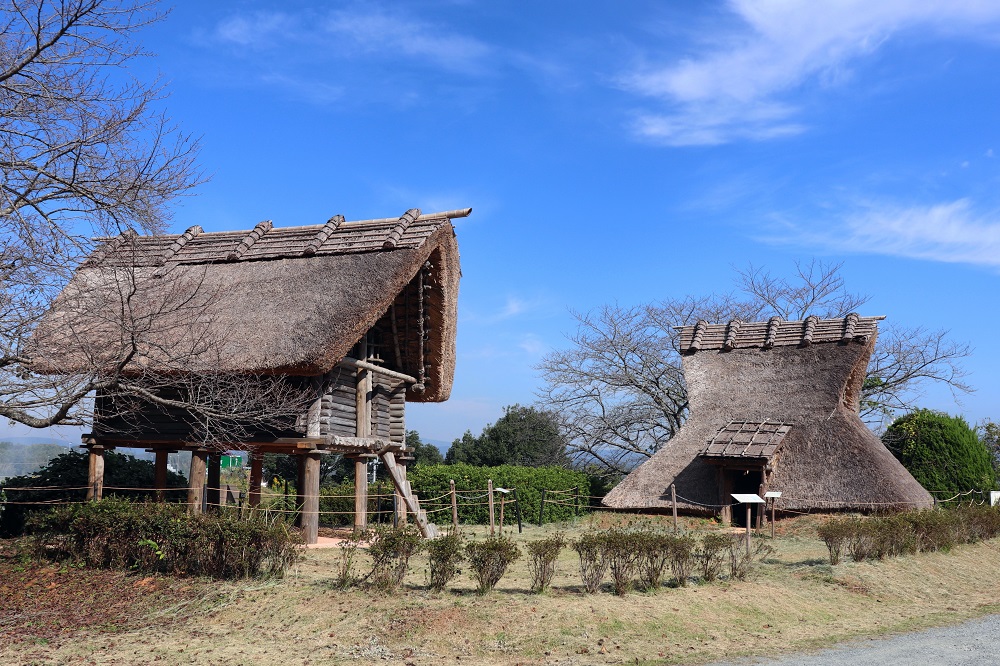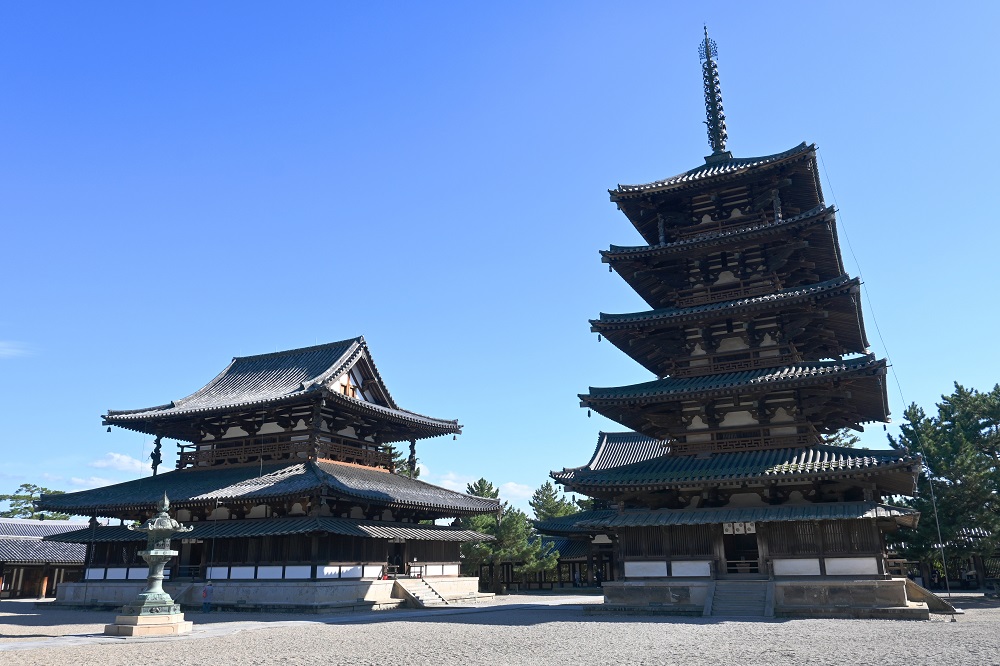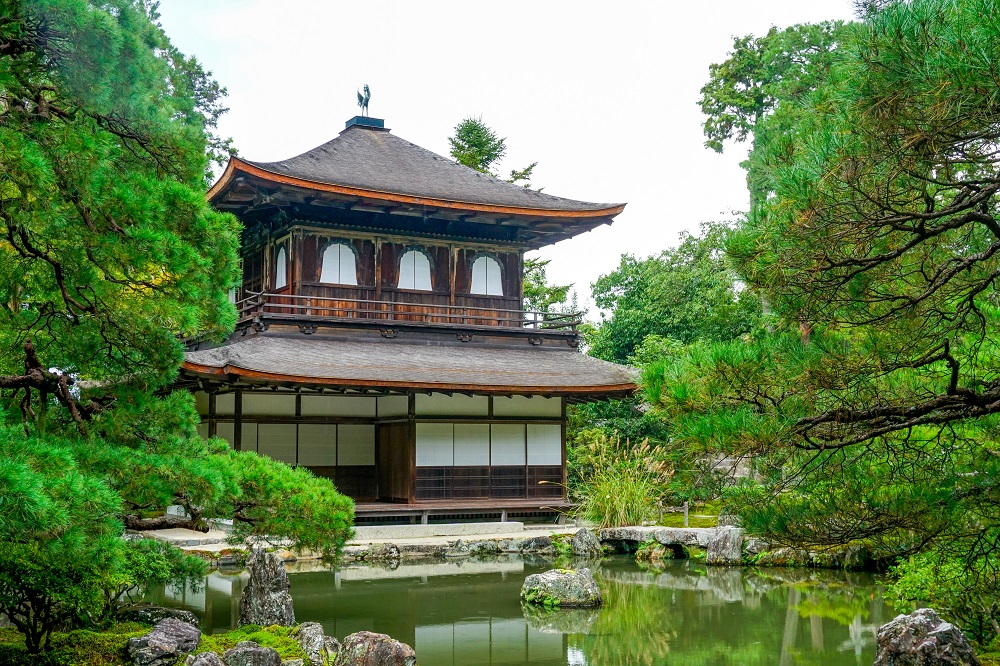The History of Japan / 日本の歴史
The History of Japan
From the antiquity to the Edo Period and beyond, Japan is a nation with rich historical heritage. Today, we are still able to find Jomon Period pit houses from 3,000 B.C. and earlier, ruins from the Yayoi Period when the rice cultivation had spread across the Japanese archipelago, and huge Kofun tombs built during the eponymous Kofun Period of the late 3rd century A.D., when the Yamato Imperial Court unified the country.

Overview
The Asuka to Heian Periods
Asuka Period (592-710)
By the Asuka Period, the foundations of politics and law of Japan had been laid, and the nation started to take shape. As Buddhism took root in the region, temples, such as "Senso-ji" and "Hōryū-ji", which are said to hold the oldest existing wooden structure in the world, were built, as well as the Asuka Great Buddha and other monuments. The numbers of ruins of the period testify to the ancient history of the area.
Nara Period (710-794)
In 710, the capital was moved to the Heijo-kyo (the present-day City of Nara), a city built in a grid pattern, marking the beginning of the Nara Period, when the emperor-centered government started. Strongly influenced by the Tang Dynasty from present-day China, the period saw numerous significant achievements, such as the construction of the Buddhist temples Todaiji, Shoso-in, and Toshodaiji, the completion of the "Kojiki" and "Nihonshiki" historical chronicles, and the introduction of paper money. On the other hand, it was also a time marred by famine, epidemics, and earthquakes.
Heian Period (794-1185)
In 794, the capital was moved to the city of Heian-kyo (Kyoto today). During this period, the center of political power gradually shifted away from the emperor and imperial family as the Fujiwara clan and the aristocratic families with closed ties to the imperial court gained the influence. The Fujiwara eventually came to wield real authority as regents known as "Kampaku". In the late Heian Period, emperors with no familial relations to the Fujiwara started as a system of "cloistered rule", formally abdicating and withdrawing to monasteries, yet continuing to rule from behind the scenes. They were supported by the warrior clans of the Taira then Minamoto, who grew increasing powerfully.
The influence from the Chinese Tang Dynasty started to wane during the mid-Heian Period, making the original culture of Japan to flourish. During this time, the "kana" script was developed, and the buildings incorporating Japanese culture such as the "Hou-ou-do" [the Phoenix Hall] of Byodoin Temple, and “Konjikidō” [Golden Hall] of Chuson-ji Temple and “Kon-dō” [Main Hall] of the Daigoji Temple were constructed.

The Kamakura and Muromachi Periods
Kamakura Period (1185-1333)
The Kamakura Shogunate took up in 1192, when the Imperial Palace appointed Minamoto no Yoritomo as "Seiii Taishogun" [unifying leader, shortly called "Shogun"] and Yoritomo moved the seat of government to the city of Kamakura (an ancient city near present-day Tokyo). The Shogunate controlled the warriors by establishing the system of granting land to the Loyal Vassals based on achievements. The Minamoto Dynasty came to an end after three generations, and the fourth generation of the Kamakura Shogunate started with the Shoguns appointed by the Imperial Palace, and the Hojo Clan exerted real power as regents. After the death of the third shogun, Emperor Go-Toba ordered the overthrow of the Hojo but was defeated by the forces of the shogunates and were forced into exile on the Oki Islands. The Mongol invasions took place in the latter half of the Kamakura Period, as the armies from the Mongolian Yuan Dynasty and the vassals from the Korean Goryeo Dynasty attacked Japan. Although the shogunate successfully repelled the invasions, with no land to distribute as rewards to the warriors, causing resentment among those who had fought. Drawing these disgruntled samurai to his side, Emperor Go-Daigo successfully overthrew the Kamakura Shogunate.
Significant cultural properties from the Kamakura Period are the Shin Kokin Wakashu poetry anthology, the Epic Tale of the Heike, and master sculpture Kongorikishi statue by Unkei at the South Gate of the Todaiji Temple.
Muromachi Period (1336-1573)
After overthrowing the Kamakura Shogunate, Emperor Go-Daigo sought to establish a government led by court nobles but was forced to flee to the Yoshino following the defection of the Ashikaga Takauji and other powerful warriors. Takauji established a new emperor and established the Imperial Palace in Kyoto, ushering in the Nanbokucho Period (the Period of Northern and Southern Courts), during which two competing Imperial Palaces existed simultaneously - the Northern Palace in Kyoto and the Southern Place in Yoshino. The Northern Palace appointed Takauji as Shogun and the Muromachi Shogunate began to take place. The Nakabokucho Period lasted until 1392, finally coming to an end during the reign of the third Ashikaga Shogun Yoshimitsu. Japan started trading with Ming China during the reign of Yoshimitsu, leading to improvements in agricultural and industrial technology, the opening of markets, and other developments in industry. In 1467, during the reign of the eighth Ashikaga Shogun Yoshimasa, a succession dispute led to the Onin War, plunging the country into conflict and turmoil that would last for almost 150 years in what is known as the "Warring States Period". The long series of wars devastated the capital, and as the Ashikaga lost control, a succession of powerful warlords rose to power, eventually leading to the overthrow of the Muromachi Shogunate at the hands of Oda Nobunaga.
The Muromachi Period saw great developments in the Japanese culture, with the tea ceremony, flower arrangement, and Noh drama all originating during this time. Furthermore, “Rokunonji Temple” (Kinkakuji [The Golden Pavilion]) and the Higashiyama Jishoji Temple (Ginkakuji [The Silver Pavilion]) were both built during the period, which also gave birth to the karesansui rock gardens and shiboku-ga Japanese paintings.

The Azuchi-Momoyama Periods
Azuchi-Momoyama Period (1573-1600)
Oda Nobunaga, the Minor Feudal Lord of Owari Province (present-day Aichi Prefecture), distinguished himself and gradually expanded his territory, seizing the power in Kyoto in 1568, and overthrew the Muromachi Shogunate in 1573. The era started to increase influence from the foreign, including the introduction of firearms and Christianity. Nobunaga built wealth by liberalizing trade, commerce and expanding distribution channels. By quickly adopting firearms, he defeated the rivals and took power. Just as if he was about to unify the country, Nobunaga was assassinated by his close aide Akechi Mitsuhide at the Honnoji Temple. Later, Toyotomi Hideyoshi defeated Akechi Mitsuhide and unified the country, and brought peace to the country. Hideyoshi came from humble beginnings in Owari to the chief vassal of Nobunaga, outlawed fighting between the daimyo, established the Samurai as a separate class by disarming the farmers, and centralized power by carrying out land surveys and making the payment of taxes obligatory. He suppressed Christians to prevent religious uprisings, and after pacifying the country, launched an invasion of the Korean Peninsula. Although they had seized immense power, the Toyotomi were destroyed by Tokugawa Ieyasu shortly after the death of Hideyoshi by illness.
Many castles were built during this period, including the Azuchi Castle of Oda Nobunaga with the soaring castle keep to symbolize the power, Osaka Castle of Toyotomi Hideyoshi and Edo Castle of Tokugawa Ieyasu, and other castles such as the Inuyama Castle in Aichi Prefecture and Matsumoto Castle in Nagano Prefecture.
The tea ceremony, originated during the Muromachi Period, spread from the aristocracy and samurai to the public, leading to the construction of many tea rooms and the production of tea ceremony utensils and ceramics. Kabuki emerged as a form of entertainment, and paintings produced during this period by artists such as Kano Eitoku, Hasegawa Tohaku, and others remain with remains today.

The Edo Period
Edo Period (1603-1868)
Born in the Mikawa Province (present-day Okazaki City in Aichi Prefecture), Tokugawa Ieyasu spent his childhood as a hostage of the Imagawa Clan, formed an alliance with Oda Nobunaga after the destruction of his previous captors, and became a vassal of Hideyoshi after the death of Nobunaga. Following the death of Hideyoshi and defeating the Toyotomi forces at the Battle of Sekigahara (1600), then finished the Toyotomi off in the Winter and Summer Campaigns of Osaka (1614-1615). The Imperial Palace appointed Tokugawa Ieyasu the Shogun in 1603 and established the Tokugawa or Edo Shogunate. Ieyasu passed various laws and ordinances to control the other daimyo, including the "One Province, One Castle" ruling to limit the number of castles that the daimyo were allowed to possess. To further reduce the power of the daimyo, the third Shogun of the Tokugawa Dynasty Iemitsu introduced a policy that required feudal lords to alternate between living in their home provinces and living in Edo each year. He also started the policy of national isolation to prevent Christians from revolting and isolated Japan off from the outside world for over 200 years. As domestic security stabilized, transportation networks have improved, and commerce has developed.
By the end of the 1600s, the dissatisfaction with the shogunate grew in response to the Edict Forbidding Cruelties to Living Things and the economic recession caused by the failure of monetary reform. In 1716, the eighth shogun Yoshimune took personal control of politics to restructure the finances of the government, promoting the frugality, the cultivation of new rice paddies, the domestic production of textiles, and other measures. In the late 1700s, harsh weather and frost damage led to a series of poor harvests, sparking peasants to revolt in various regions, and in the late 1800s, foreign ships arrived and the shogunate had struggled to respond. In the 1830s, the shogunate was again weakened by famines that led to rebellions across the country.
In 1853, Commodore Matthew Perry of the United States Navy arrived at Uraga (present-day Kanagawa Prefecture) to compel the shogunate to open Japanese ports to foreign trade. The resultant Japan-US Treaty of Peace and Amity was concluded in 1854, followed by similar treaties with the United Kingdom, Russia, and the Netherlands. In 1856, the shogunate signed the Treaty of Amity and Commerce between Japan and the United States. The unfavorable terms of the treaty wreaked havoc on the economy, sparking movements to expel foreigners and overthrow the shogunate. The intensifying conflict between the shogunate and anti-shogunate forces caused unrest across the country. Over time, it became increasingly evident that the shogunate was headed for defeat. In 1867, the last Tokugawa Shogun Yoshinobu returned power to the Imperial Palace in what came to be known as the Meiji Restoration, and in 1868, the Tokugawa Shogunate came to an end with the bloodless surrender of Edo Castle.
This period saw various cultural developments. Architectural highlights include the Nijo-jo Castle [Kyoto Prefecture], Nikko Toshogu Shrine [Tochigi Prefecture], and Katsura Imperial Villa [Kyoto Prefecture]. The culture of the common folk also blossomed, with haiku poetry, works of fiction, ningyo joruri puppet theater, and ukiyo-e woodblock prints becoming widespread. Education also flourished, in addition to clan schools for children from samurai families, temple schools were opened for the children of commoners.
In 1868, as the Meiji Era started, Japan set off on the path to modernization.

